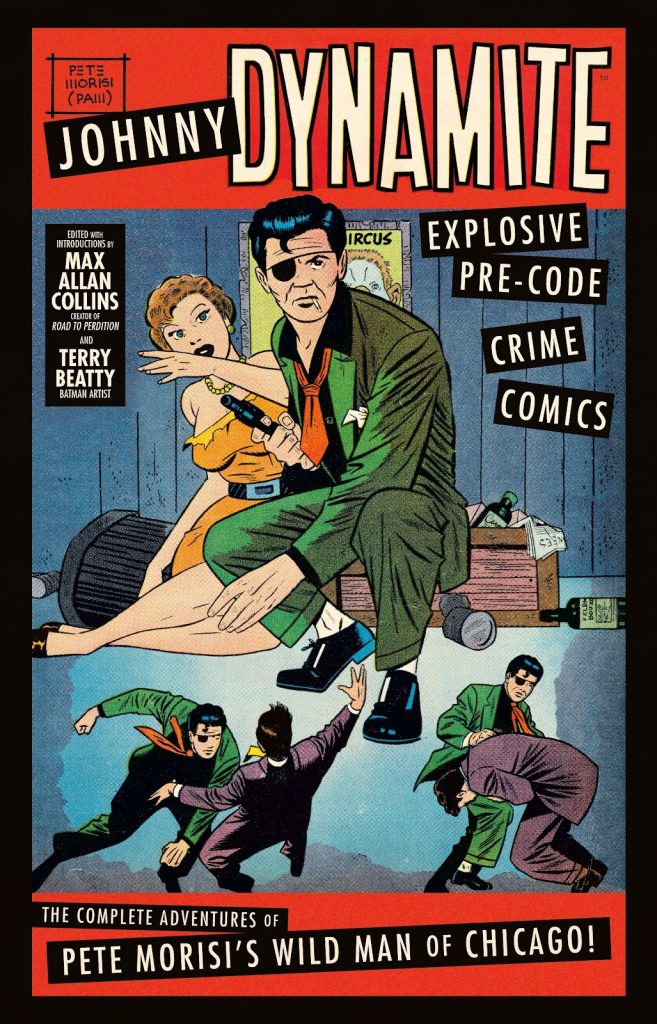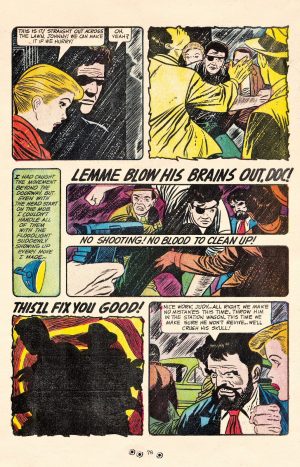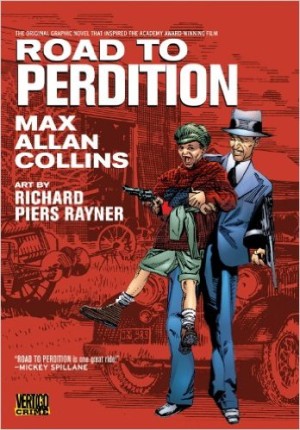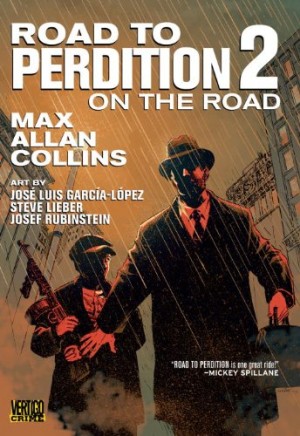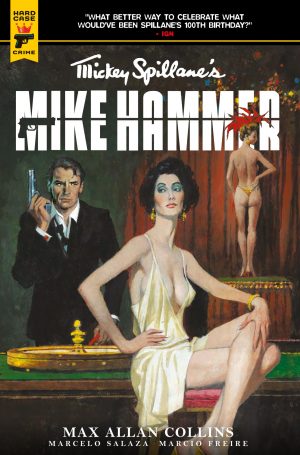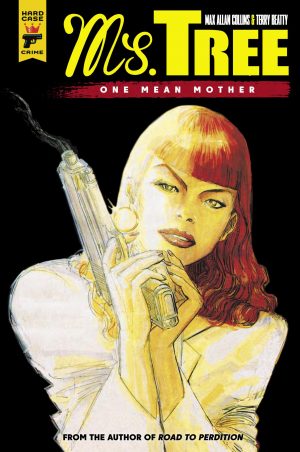Review by Frank Plowright
Johnny Dynamite first appeared in 1953, and an extensive and informative introduction from Max Allen Collins, who knows about crime writers, notes the many similarities to Mickey Spillane’s tough private investigator Mike Hammer. Hammer’s first appearance was in I, The Jury, and that’s certainly the route taken by the even more improbably named Dynamite, who saves court time by dispensing his own justice. A few episodes in, a slight effort is made to blur the obvious by giving Dynamite an eye injury requiring he wear a patch from then on. The cover stresses the content pre-dates the restrictions of the Comics Code, but by today’s Punisher standards mentions of prostitution and Dynamite’s trigger-happy personality are tame.
William Waugh is credited as writer, but as Collins explains, it’s an alias for Ken Fitch, who over the course of the first few stories thoroughly establishes Dynamite’s abrasive personality and brutal methods in taut thrillers packing a lot of plot and a lot of punch. They’re largely just told by the frequently gruesome descriptive captions, with Pete Morisi’s art adding colour and restrained from showing all those captions describe.
Read individually these are taut crime dramas. The space limitation works against them due to mysteries barely having enough suspects, but when the formula is switched to an obvious suspect with the mystery being what they’re hiding, the material improves. These are exemplified by a tale of Dynamite’s secretary needing to recover from illness in a sinister asylum. The attitude to women is of their times, so poor throughout. They’re largely there to simper, faint or have Johnny slaver all over them, with the occasional woman audacious enough to run her own racket. A fair few die in his company.
If your preference is to steam through the book, the formula and repetition becomes obvious whether Fitch or Morisi writes. There’s a fair chance Dynamite will be blindsided at some point, he’ll cop off with the girl, villain or not, and he’ll probably kill at least one person as he figures out who’s playing him for a patsy this time. Both writers manage a fair approximation of Spillane’s lurid style, but Fitch is better at compressing a plot into a limited page count.
Much is made in the introduction of Morisi’s drawing being extraordinarily similar to the style of George Tuska in the 1950s, something that apparently didn’t bother Tuska. Reading between the lines, it seems to be suggesting Morisi copied Tuska. Whether or not that’s the case, the art is entirely suited to the stories, with Morisi supplying what’s needed in terms of action, personality, light and shade.
For completion’s sake the collection includes what was passed off as a Johnny Dynamite story, but seems to be Morisi modifying something unconnected by drawing an eyepatch on a detective in Vietnam. Far better is Collins and Beatty reviving the out of copyright character for their own Ms. Tree strip. As it’s written as comics rather than attempting a Spillane homage, on those terms it’s the best of the collection.
